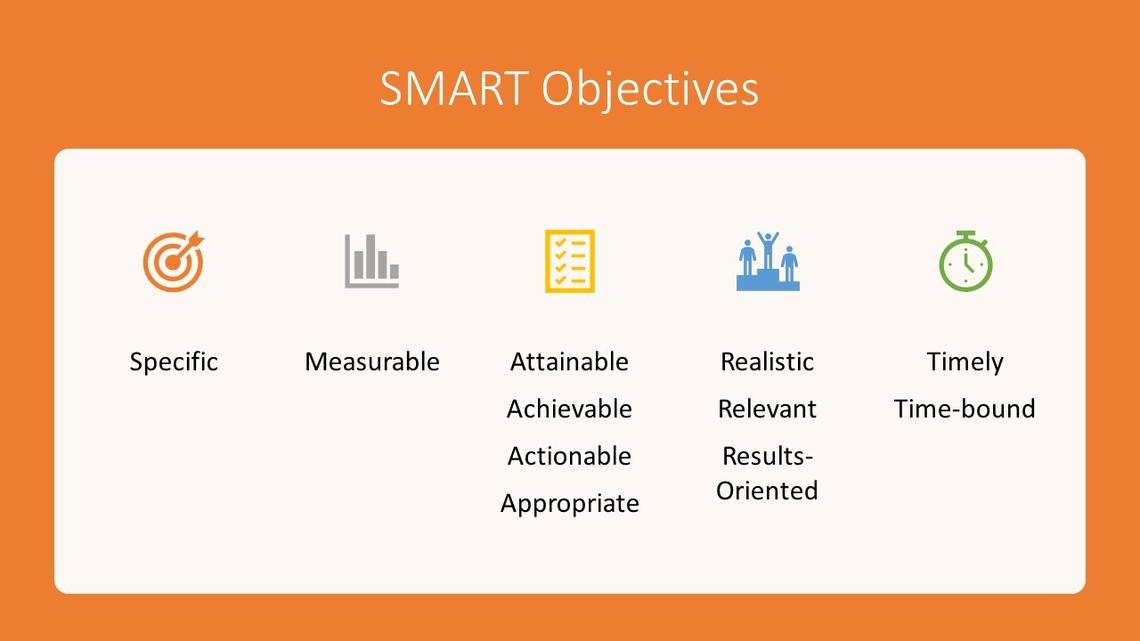Step #3: Developing Goals and Objectives
Specific objectives for the learning or remediation plan must be informed by:
- Deficient rotational objectives defined by the program as identified by the program director and/or identifying preceptor,
- Specific items on failed or borderline rotational ITER(s) consistently flagged as below expectations
- Deficient milestones defined by the program EPAs
- EPAs that have not been achieved in the expected timeframe
- Identified communication, professionalism issues
- Failure to meet other program requirements (e.g. Scholarly projects)

Objectives are meant to be specific, measurable, achievable, realistic, and timely (SMART).
Five basic elements should be included when writing objectives: 1) who, 2) will do, 3) how much, how well, 4) of what, and 5) by when.
It is particularly important in remediation plans to provide clarity in exactly what learners are meant to improve and what a success looks like. The aim is to reduce subjectivity that leaves the determination of success at the discretion of the remedial preceptor(s).
Below are some examples for writing learning objectives related to learner deficits:
Identified Weakness a learning plan should have no more than 3-5 areas of focus | Specific Objective for Remediation Objectives are specific measurable statements pertaining to what success looks like for that area of focus (statements specify who will do how much (or how well) of what by when) |
EXAMPLE 1: Lack of demonstrated knowledge specific to the rotation.
| Demonstrate knowledge of the pathophysiology, clinical presentation, and standard treatments for common presentations listed in the objectives for this rotation. What success looks like: Resident will score a minimum of 70% on end-of-rotation written test and OSCE at the end of the 3-month remedial period.
|
EXAMPLE 2: Ineffective time management & prioritization with respect to patient care.
| Manage and prioritize patient tasks as expected for level of training by completing all tasks daily by handover. What success looks like: Resident will manage a patient load expected for level of training (i.e. approximately 4 patients per day) by the final block of the remedial period without passing on tasks to the handover team.
|
Conversations with members of the RPC also help identify strategies for the learning plan, including identifying useful rotations and strategic educational support team members (i.e. mentors, remedial preceptors, coaches, etc.) to help achieve the objectives.
Identifying Levels of Competence
It is important to gain an understanding both of:
- what the resident is not doing well
- what the resident is doing well
Progressing from a novice to an expert takes time and practice. There are progressive steps of increasing competence that an individual moves through along the way. Competence-by-design (CBD) is the Royal College version of competence based medical education (CBME). Milestones, as per the Royal College, are defined as “the abilities expected of a physician or trainee at a defined stage of development” (Royal College of Physicians and Surgeons of Canada) and can be broken down further into finer components.
The concept of “entrustment” with respect to specific tasks and responsibilities helps faculty match the resident’s performance with the level of supervision and interjection required. An entrustment scale can look like this:
| Level 1 Competence: UNABLE | Level 2 Competence: NOVICE | Level 3 Competence: ADVANCING | Level 4 Competence: COMPETENT | Level 5 Competence: PROFICIENT | |
| Anchor | Unsatisfactory knowledge to perform skill | Requires Constant Direction | Requires Intermittent Direction | Minimal Direction Required |
Performs task with Complete Independence |
| Descriptor |
“I had to do” |
“I had to talk them through” | “I had to prompt them from time to time” | “I needed to be in the room just in case” | “I did not need to be there” |
| The resident is an observer only. The resident is not ready to perform the skill, even with supervision. | The resident requires direct supervision. The resident is trusted to perform the skill with direct supervision, such that direct assistance is provided. | The resident can function with indirect or intermittent supervision. The resident is trusted to perform the skill with indirect supervision, such that the resident will be watched and intervention will be administered if necessary. | The resident can be considered mostly independent with some monitoring. The resident is trusted to perform the skill independently and but will still review more complex cases with the rotational preceptor shortly thereafter. Some preceptor intervention acceptable. | The resident can be considered independent and ready to transition to practice. The resident is trusted to perform the skill independently. Preceptor reviews case with resident but does not need to recommend a change of resident's management plan. |
The entrustment scale provides preceptors and residents with anchors that clarify their expected level of performance for their current level of training for specific skills or degree of complexity of cases.
Whatever you choose to use as a measure of competence, it is important to understand where the resident currently lies on the greater continuum of competency and start from their strengths to enhance chances of success, and to not skip over steps needed to make progress. Remedial activities should start at an appropriate point along the continuum of expertise. Articulating the gap between current performance and expected competence as per level of training can help guide the types of strategies and supports that should be included in the remediation plan.
